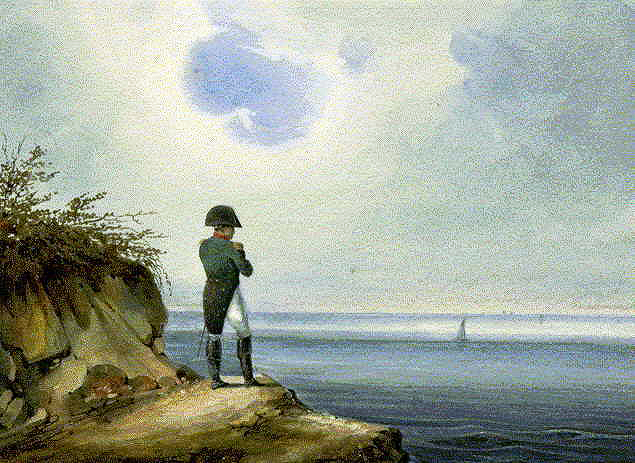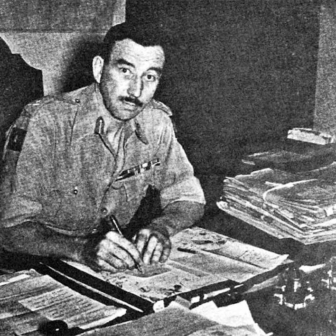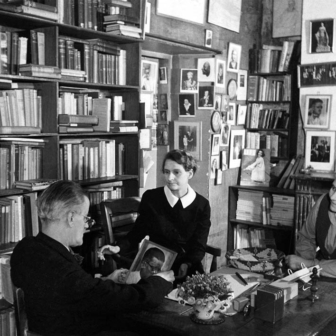Napoleon’s Last Island
By Tom Keneally | Vintage Australia | $32.99
Betsy and the Emperor
By Anne Whitehead | Allen & Unwin | $32.99
After his defeat at Waterloo in 1815, Napoleon Bonaparte was shipped to the island of St Helena, a rocky outcrop in the southern Atlantic Ocean between Brazil and Africa. Although they were determined there would be no repeat of the escape from Elba, the British and their allies allowed him to live in the countryside, surrounded by friends and servants, and maintain some of the style he felt due to an emperor. With the support of the devoted Count Las Casas and his son, Napoleon set about recording his legacy. For the most part, British officials kept their distance, relying on spies to pass on information about the daily routine of their captive.
St Helena appears to have been a community of writers. Napoleon’s international fame rivalled that of celebrities today, so everyone in contact with him kept a record, some in the hope of making their fortunes. His doctors, his secretary, his valet, his aristocratic companions, his generals and their wives, and even the wives of the British officials all left accounts of his final years. They recorded not only what he said but what he ate, when he slept, his every movement and social contact.
One of his more entertaining friends was Betsy Balcombe, the daughter of an East India Company representative on the island. She was only thirteen when Napoleon moved into the pavilion behind her family’s country house and she was allowed freedoms with the “emperor” not granted to adults. By the end of 1816 she, too, had become famous after the London Times and French newspapers published the Marquis de Montchenu’s version of her dalliance with Napoleon. Later in life, almost destitute, she wrote her own account of this friendship.
For her new book Betsy and the Emperor Anne Whitehead scoured the archives, including the neglected French records of the years on St Helena, to provide an amazingly full account of Bonaparte’s daily life, and of Betsy Balcombe’s later life in Sydney and England. Her research reveals the way networks of patronage operated across the British Empire in the early nineteenth century, from London to St Helena, the Cape, India and Sydney. Her Betsy is a well-travelled representative of the smart middle-class girls of Jane Austen’s novels, allowed a degree of freedom in her youth but ultimately obliged to deal with faithless fortune-hunters and to follow her father to the ends of the earth.
Though it was the high point of Betsy’s life, Napoleon’s captivity was undoubtedly the dullest period of his. Thomas Keneally shrewdly chooses Betsy as his narrator for a novel about the Great Man’s last years (Betsy refers to him as OGF, Our Great Friend), adding a gloss of youthful excitement to his loss of power and physical decline. The novel begins with an account of Napoleon’s death delivered to the Balcombe family by Barry O’Meara, the Irish surgeon who tended him and fell foul of the British governor for his doubtful allegiances. After his expulsion from the island, O’Meara was forced to make his living as a dentist in London while he completed the book he hoped would restore his fortune. In Keneally’s hands, O’Meara – with Betsy reporting his account – spares no details for the ladies’ sensibilities, including the gruesome touch of a rat devouring the heart and ear of the corpse.
While this emphasis on the horrors of bodily decline reminds us of his predilections in earlier novels, for the most part Keneally makes Betsy’s account plausibly that of a mature woman recalling herself as a lively girl. In order to provide us with necessary information, he has her eavesdropping at doorways, hiding in the basement to listen to the conversation of men, even bursting in on a sexual scene where the cross-dressing Napoleon is surrounded by his naked and half-naked friends – though this last seems a clumsy way to let us know that, with the help of his friends’ wives, he was not living like a monk.
In the early days of their acquaintance, when he lived in the pavilion at the Balcombes’ estate, the captive and his companions regularly came to dinner with the Balcombes, and Betsy took the opportunity to tease him, often causing concern among his protectors. Napoleon may be the character of most interest, but Keneally makes Betsy a sympathetic and perceptive foil. He turns a reported incident where Betsy plays with Napoleon’s sabre into a moment of psychological recognition between the two. An initial teasing moment builds into a drama of threat and possibility as Napoleon goads her on:
So, in frantic excitement I began to make slashes in the air either side of his body, and then, reaching the limits of my strength, swishes above his head, even while holding on in desperation so that the sword would not fall and harm him. A mere cut, as against a serious penetration, would reduce the scene to inanity. It wasn’t what he was looking for. He was looking for something ultimate, and that was marvellous.
As Betsy grows towards womanhood, her life on the island becomes a round of balls, dinners, visits to ships, and social calls on neighbours. Napoleon and his party are settled away from the Balcombes in a larger but less comfortable house, and Betsy’s visits to him become more restricted. She increasingly reports his activities from secondhand sources like Fanny Bertrand, the wife of General Bertrand, or from servants’ gossip. But Napoleon maintains his interest in her, even manipulating her for his own amusement. Banned from any social appearance himself, he manages to arrange for Betsy to ride his Arab horse in the ladies event at the island’s races; she wins easily, of course, much to the annoyance of the watching officials and other ladies.
In the last sections of the novel, Betsy becomes an open supporter of Napoleon in his ongoing struggle with Sir Hudson Lowe, the British governor of the island, whom she calls Name and Nature (as in “low in”). The British government has at last taken over the island from the East India Company, and Lowe takes his responsibilities seriously. For Betsy, Napoleon is generous and heroic, and Lowe is no more than his mean-spirited, officious jailer. We learn that her father has helped Bonaparte communicate with friends and banks in Europe, though such support must be close to treasonous, and the family is finally sent away.
Whitehead’s version of Lowe’s situation and the Balcombes’ fall from grace is necessarily more complicated. She takes Betsy’s story well beyond Napoleon’s life to describe her disastrous marriage to and abandonment by Edward Abell, and her father’s subsequent career in Sydney as the colonial treasurer. William Balcombe kept the colony’s revenue in his house in O’Connell Street and fell into disgrace when Governor Darling, another punctilious colonial administrator, was appointed to investigate the colony’s management. Whitehead’s description of Sydney social life – the turf club, the Masonic lodge, the balls – gives a lively sense of the ambition and greed behind life in 1820s New South Wales. William Balcombe may have been given to shady deals, but his behaviour appears symptomatic of the mixed private and public nature of colonial administration. And Whitehead’s account of the visit by a French naval expedition under the command of Hyacinthe de Bougainville, who engaged in flirtations with the ladies of Sydney, suggests material for at least another novel of Georgian misbehaviour.
In Napoleon’s Last Island, Keneally is content to focus on the character of Napoleon seen at close quarters, then from an admiring distance, by his teenage narrator. He clearly enjoys imagining his way into the mind and experiences of a flighty girl, with her schoolgirl understanding of the Napoleonic wars and tendency to hero worship. As a result, the novel’s allegiances are with the emperor (strangely for a republican author), and Napoleon emerges as a more kindly and less dangerous creature than the many other written accounts might attest. In his introductory note, Keneally describes Napoleon as “ruthlessly enchanting.”
Napoleon’s connections with Australia may seem tenuous at first, but these two books remind us that New South Wales shared the British obsession with him, and that Waterloo had direct effects on our society. Whether you prefer the rollicking story of a novel or the engaging narrative of a detailed history they are a fitting celebration of the 200 years since Napoleon’s surrender. •




